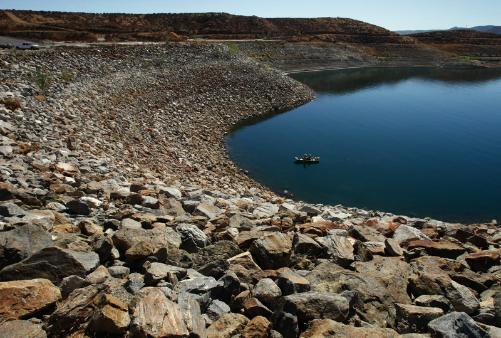Why are these new Calfornia water conservation laws important?! – Ventura, Oxnard, Camarillo, and Santa Barbara Landscape Design
California has always been at the forefront of the most advanced and meaningful water use and conservation laws. The ultimate goal of these laws is to create the world’s best, most advanced, and most reliable water infrastructure. Contributing factors such as conservation and efficiency are just a few things that play into this, but why have they really come to the front of the debate in the past 20 years? There are two reasons:
- As California has grown and developed, the amount of storm-water flowing off buildings, parking lots, roads, and other impervious surfaces into surface water streams, flood channels, and storm sewers has increased, thereby reducing the volume of water allowed to infiltrate into groundwater aquifers and increasing water and pollution flowing to the ocean and other surface waters. At the same time, recurring droughts and water shortages in California have made local water supply augmentation and water conservation efforts a priority.
- Historical patterns of precipitation are predicted to change, with two major implications for water supply. First, an increasing amount of California’s water is predicted to fall not as snow in the mountains, but as rain in other areas of the state. This will likely have a profound and transforming effect on California’s hydrologic cycle and much of that water will no longer be captured by California’s reservoirs, many of which are located to capture snow-melt Second, runoff resulting from snow-melt is predicted to occur progressively earlier in the year, and reservoirs operated for flood control purposes must release water early in the season to protect against later storms, thereby reducing the amount of early season snow-melt that can be stored.
The State of California strongly believes through scientific research that rainwater and storm-water captured and properly managed, can contribute significantly to local water supplies by infiltrating and recharging groundwater aquifers, thereby increasing available supplies of drinking water. In the past two decades, our state has begun investing real capital to support this notion. In addition, the onsite capture, storage, and use of rainwater for non-potable uses significantly reduces demand for potable water, contributing to the statutory objective of a 20% reduction in urban per capita water use in California by December 31, 2020. This may seem like a crazy objective to meet, until people learn that the average property in California uses more than 60% of their potable water on their landscape.
Lastly, as responsible citizens, we must recognize that expanding opportunities for rainwater capture to augment water supply will require efforts at all levels, not only from state and local agencies, but also from individual landowners and watershed managers. United we are stronger, and united we will realize the goals set forth to ensure the future of California’s water; talk to us, and we can help you make this happen.




Comments are closed.